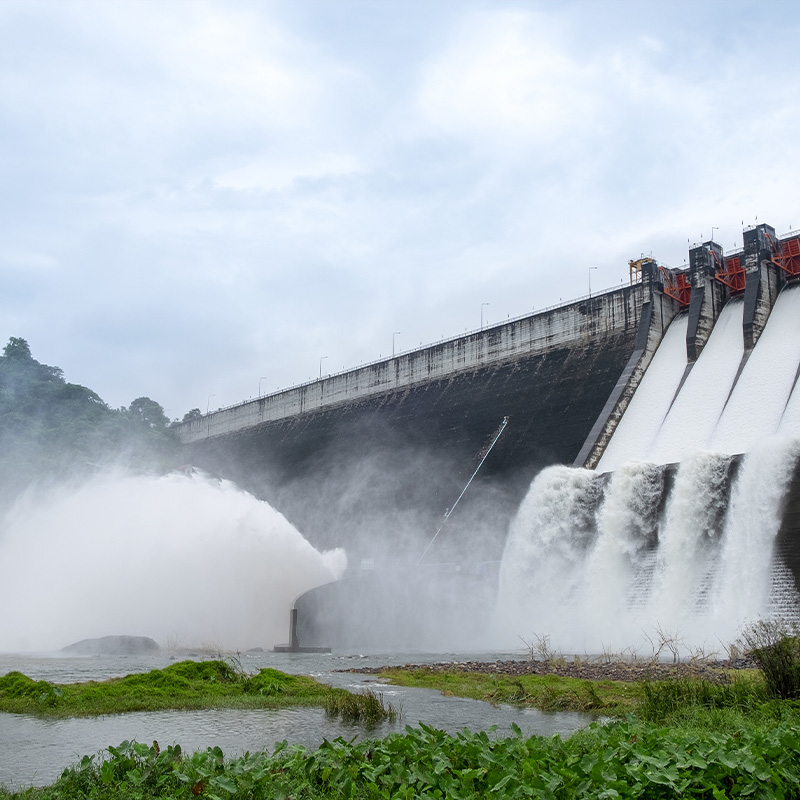
Is Hydropower the secret winner of the Belt and Road Initiative?
One Belt, One Road and Several Dams
When it comes to renewable energy, there are few areas where China is not a dominant player, even in areas such as Offshore Wind where countries like the UK and Germany hold a lead, China will soon overtake them in capacity. However, whilst many renewable energy advocates focus on solar and wind energy, one area that China holds a significant dominance in is hydropower. China is home to some 87,000 dams and has a hydroelectricity capacity estimated between 500GW-600GW making it the countries second largest source of energy. Its hydropower capacity is double second placed Brazil. It is logical that with such a national competence in hydropower, that it would be a core part of the ambitious renewable energy strategy of the Belt and Road Initiative (BRI). This article will provide a survey of the use of hydropower in the BRI.
Giving a “dam” about the Environment
Hydropower has a complicated relationship with the rest of the renewable energy space. The environmental impact of setting up a dam and the destruction of animal habitats is well attested. Outside of China many countries have hydropower as a legacy of time periods where such impacts were not considered, despite this, the contribution of hydropower to most countries’ (that have it) grid is significant. Countries such as Norway, Iceland and Costa Rica all have significant hydroelectric capacity. The result is that whilst hydropower is clean energy, it is not consistently viewed as such. In California, hydropower is not considered a clean energy source and there are moves to try and demolish four existing dams on the Klamath River (this would be the largest dam removal project in US history).
Three reasons why hydropower is gaining traction in the BRI
Given the controversy surrounding hydropower there are at least 10 schemes that are part of the BRI. Its useful to understand the reasons behind supporting hydropower as part of the scheme:
- The energy context in Asia: only one scheme is outside Asia and that is the Karuma Hydropower Project in Uganda. Although hydropower requires a strong upfront investment it offers cheap electricity and good income for developing countries. Equally important is the challenges that many Asian countries have in decarbonising, using hydropower to move away from coal for many in Asia feels like a price worth paying.
- The domestic challenge: China has the largest hydropower sector in the world, but the home market is saturated and demand for large dams is slowing down. There is clearly a benefit in refocusing these firms overseas. There is also more likely to be a longer term relationship on the maintenance of hydro assets which would satisfy some of the wider objectives of BRI.
- Irrigation and water control: in several countries, hydropower has been linked to flood prevention and improved irrigation schemes.
What are the key projects?
The table below highlights the key projects included under BRI:
- Lower Sesan Two Hydropower Dam (Cambodia)
- Karuma Hydropower Project (Uganda)
- Nurek Hydropower Rehabilitation Project, Phase I (Tajikistan)
- Tarbela 5 Hydropower Extension Project (Pakistan)
- Nenskra Hydropower Plant (Georgia)
- Suki Kinari Hydropower Project (Pakistan)
- Gilgit KIU Hydropower (Pakistan)
- Phandar Hydropower Station (Pakistan)
- Kayan River Hydropower Plant (Indonesia)
So, is hydropower the secret winner of BRI?
China has about 36 renewable energy investment projects in BRI countries, with an installed capacity of 15.75GW (China as the project owner or investor). With around 10 of these schemes including hydropower or involving a hydropower business, the technology is well placed to reap the benefits of the BRI. There are two other possible measures of success for hydropower as part of BRI. The first is that it has enabled a proliferation of hydropower to other countries. The second measure will be whether it translates to wider international success for Chinese businesses in the emerging pumped hydro storage market. Whilst undoubtedly pumped hydro also carries several of the same environmental hazards and biodiversity risks as hydropower, it does not attract the same opprobrium.
However, it is possible to overstate the case for hydropower being the biggest winner. It certainly has done well so far from BRI, but as the scheme widens, it is likely that solar and wind energy will become more dominant. As technologies they are more popular, more flexible – especially geographically and supported by large domestic manufacturing bases.
